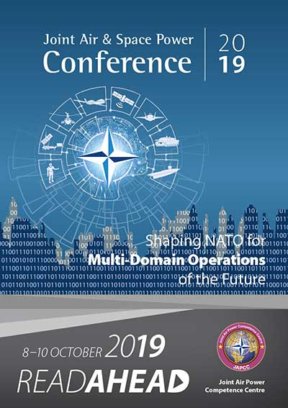Courtesy of National Defense, NDIA’s Business & Technology Magazine
For the US military to maintain its status as the greatest fighting force in the world, it must continue to learn and understand the Multi-Domain battlespace and significantly improve its operations across the entire range of military activity.
It is widely believed that the US military is exceptional and by far the best in the world, but adversaries are catching up. The key to maintaining its advantage and deterring or defeating its enemies rests in its ability to simultaneously operate through and across all domains. It must present foes with multiple dilemmas for which they have no answer and no way to predict what will happen next.
Potential adversaries are making significant improvements in cyber warfare in order to minimize traditional US dominance in all the other domains. The United States must become the best in cyber just as it has mastered all the other domains.
This will require significant advancements by the US defense industrial base and the US military in new technologies like artificial intelligence, machine learning, autonomous and semi-autonomous systems, quantum computing and big data, to name a few. Also, just as it understands and works to gain and maintain space, air, land and naval superiority, it must also understand and work to gain and maintain superiority across the entire electromagnetic spectrum.
The US military has been nothing short of spectacular and its command and control of its forces has continually improved. The beginnings of Multi-Domain Operations can be seen on today’s battlefields. For example, air operations centres have made significant advancements to fuse space, air and some nascent cyber effects to support the joint fight.
There is similar progress at space, land and maritime operations centres. But they are all somewhat stovepiped. There is ongoing work to integrate the operations centres, but it often becomes a matter of de-confliction. There are still struggles to find the best way to incorporate the cyber command and control into all the operations centres as well as the intelligence community and interagency.
Much like John Boyd’s OODA loop – observe, orient, decide and act – the military can approach this problem through the three layers of the execution of operations.
First is the sensing layer – intelligence, surveillance, reconnaissance and analysis – to understand the enemy, the environment and the military’s place in the joint Multi-Domain fight. Second is the command-and-control layer. And finally, the effects layer, which includes kinetic, non-kinetic and information operations.
To truly get to Multi-Domain Operations, one has to look at all the domains as they relate to the three layers. The first challenge that has to be worked through is visualization. One must see how domains relate to each other. Can a common operating picture of all the domains be created – along with the necessary networks – to provide the joint force with all the needed information to stay inside the adversary’s OODA loop?
The second challenge is time. Each domain works on different timelines. Dismounted special operators move at a few miles per hour. Aircraft carriers sail at 30 knots. Jet fighters break the sound barrier and cyber operations move at the speed of light. All this must be coordinated so the right effect is delivered at the right time.
The third challenge is cyber and spectrum superiority. The US military must operate across the entire electromagnetic spectrum to maintain networks and create effects in the targeted domains – all while the enemy is attempting to do the same.
Here is a tactical scenario that illustrates where improvement is needed. It involves a group of heavily defended mobile targets in the littoral area of a hostile country.
First, a sensing layer is needed to find, fix and track the targets, which the stealthy F-22 can provide. Given the number of targets and the long-range necessary to reach them, a large magazine is required with long-range weapons. A submarine carrying Tomahawk land attack missiles is available. These are stealth platforms that can penetrate enemy defences long enough to accomplish the mission.
A network is also required to take the F-22 sensor data and send it to the Tomahawks. A command-and-control network creates a common operating picture of the environment that allows the joint force commander to understand what it takes to get both the submarine and the F-22s to the right place at the right time to execute the mission.
Accomplishing the mission becomes more complicated as other domain requirements are added. For example, a cyber weapon may be needed to disrupt the enemy’s integrated air defence systems to allow the F-22s to stay on station long enough to provide sensor information.
A Special Forces operational detachment alpha team may be on the ground taking action to disrupt the enemy’s command-and-control network. Communication and GPS satellites may have to be adjusted to operate in a heavy electromagnetic jamming environment.
All of these capabilities operate on different timelines. There is the time it takes to deploy a submarine into a launch area, or to adjust satellites. There is the time needed to insert a special ops team.
And all of this could happen as cyber effects are transmitted at the speed of light.
The US military needs the ability to understand and visualize all the domains and their timelines so it can create a common operating picture. It needs networks that connect all the domains to pass and receive the data necessary for its missions. And it needs to control the electromagnetic spectrum to accomplish all this in environments where the enemy will do everything in its power to disrupt US communications and networks.
Bringing the military, industry and academia together in open collaborative settings will facilitate the true integration of sensors, command and control and effects across all domains.











